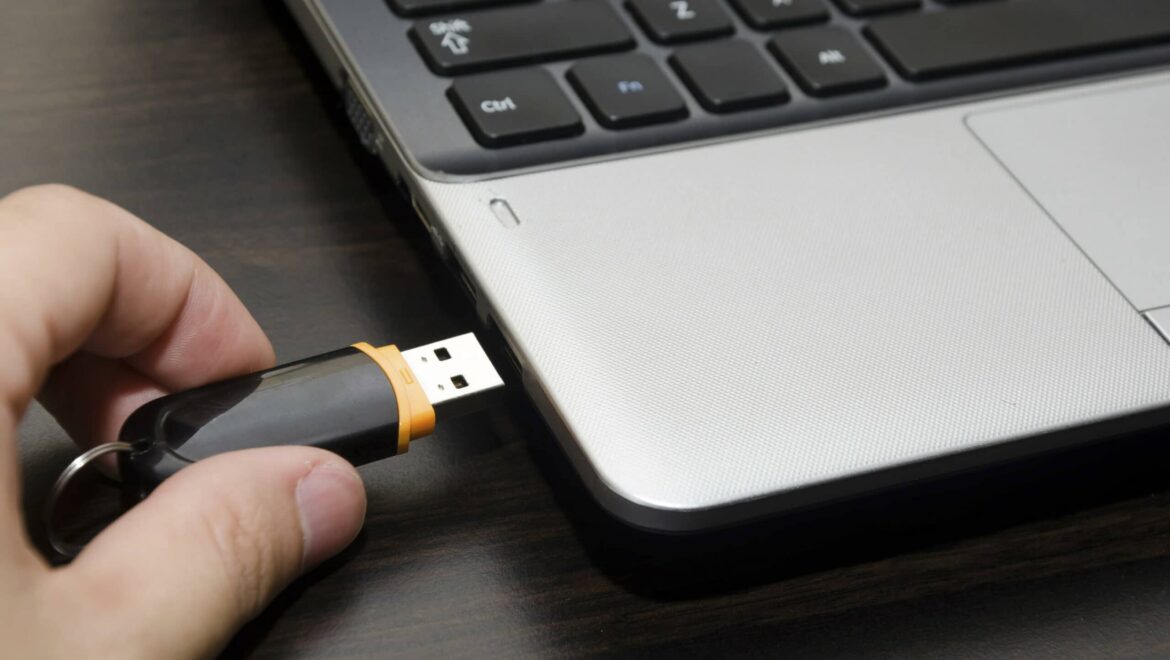We explain how to remove write protection from a USB stick. A locked USB stick quickly leads to trouble, for example when you can no longer copy files.
USB stick: Write protection is not always easy to remove
Unfortunately, write protection still causes many problems under Windows. Changes are not applied, functions are not available, USB sticks are damaged.
- If none of the following instructions help you, this is unfortunately not an isolated case. Especially under Windows 10, there seem to be more problems again.
- If the instructions below do not help you, you can try additional tools. The free LockHunter as well as the Unlocker are worth a try.
The USB stick with lock switch
Similar to SD cards, some USB sticks also have small switches that switch between active and inactive write protection.
- So take a close look at your stick and make sure that any switch you have is set to “unlocked” or “write”.
- If you do not find a switch, the problem is at the software level. Read on in the next paragraph.
Disable the software write protection from the USB stick
In the Windows menu you can – depending on the mobile hardware – give an external memory a software write protection. You can also remove it in the same way:
- Open Windows Explorer and click on “Computer”.
- Finally, right-click on the stick partition and select “Properties”.
- Here you will find the dialogue “write-protected” at the bottom. Make sure here that the check mark is not set.
- Note that you can usually only remove the write protection on the computer you used to set it.
Remove the unwanted USB write protection
If you have accidentally pulled your USB stick out of your PC while reading or writing and without “Safely Remove Hardware”, many sticks automatically switch on write protection to protect your data. This is how you can remove the protection again:
- Important: Here it is necessary to format the USB stick, which means that all your data will be lost. If they are indispensable, try to recover them beforehand with a tool like “Smart Data Recovery”.
- Once you are back in the “Computer” dialogue, you can try to recover the stick by right-clicking and selecting “Format”.
- If you get an error message here, you must intervene directly in the system yourself: Enter “regedit” in the Windows search and open the “Registry Editor”.
- Here, first select “HKEY_LocalMachine” in the navigation bar on the left and open the subfolders by clicking on the small arrow next to the name. Now select “System”, “CurrentControlSet” and finally “Control” again.
- Scroll down in the navigation until you reach “StorageDevicePolicies”. If this directory does not yet exist, right-click on the “Control” folder and select “Key” under “New”. Give the newly created folder the name “StorageDevicePolicies”. Pay particular attention to upper and lower case.
- Open the folder, two files appear on the right-hand side. Select the entry “WriteProtect” here. If the file does not exist, continue reading until point 8.
- In the dialogue that opens, select “Hexadecimal” on the right-hand side. Enter “0” in the field on the left – this means that all your external storage devices are automatically no longer write-protected. Confirm the entry with “OK” and close the “Registry Editor”.
- If the latter file does not yet exist, create it in the above-mentioned folder again by right-clicking and name it “WriteProtect”. Make sure here that you create a 32- or 64-bit file in the context menu – depending on which system your PC is running on. Find out here.
- Restart your computer and press the “Windows” and “E” keys at the same time. Right-click on the USB stick and select the “Format” option.
USB-Stick: Remove write protection permanently
If the write protection is still not removed, the following procedure will help:
- Press the [Windows] and [R] keys simultaneously so that the “Run” command opens.
- Enter “diskpart” here and click on the “OK” button. The command prompt will then start.
-
Wait a few seconds, then enter the command “lis dis” and confirm by pressing the [Enter] key.
- Using the command “clean”, the USB stick is completely deleted, but not yet formatted.
- Now use the commands “create partition primary”, “select partition 1”, “format fs=FAT32 quick” and “active” one after the other.
- The USB stick has now been formatted and allows access again. Note that all files are deleted during this process.
-
All data carriers are now listed. Then use the command “sel dis X”. Replace the “X” with the displayed number of the data carrier.
